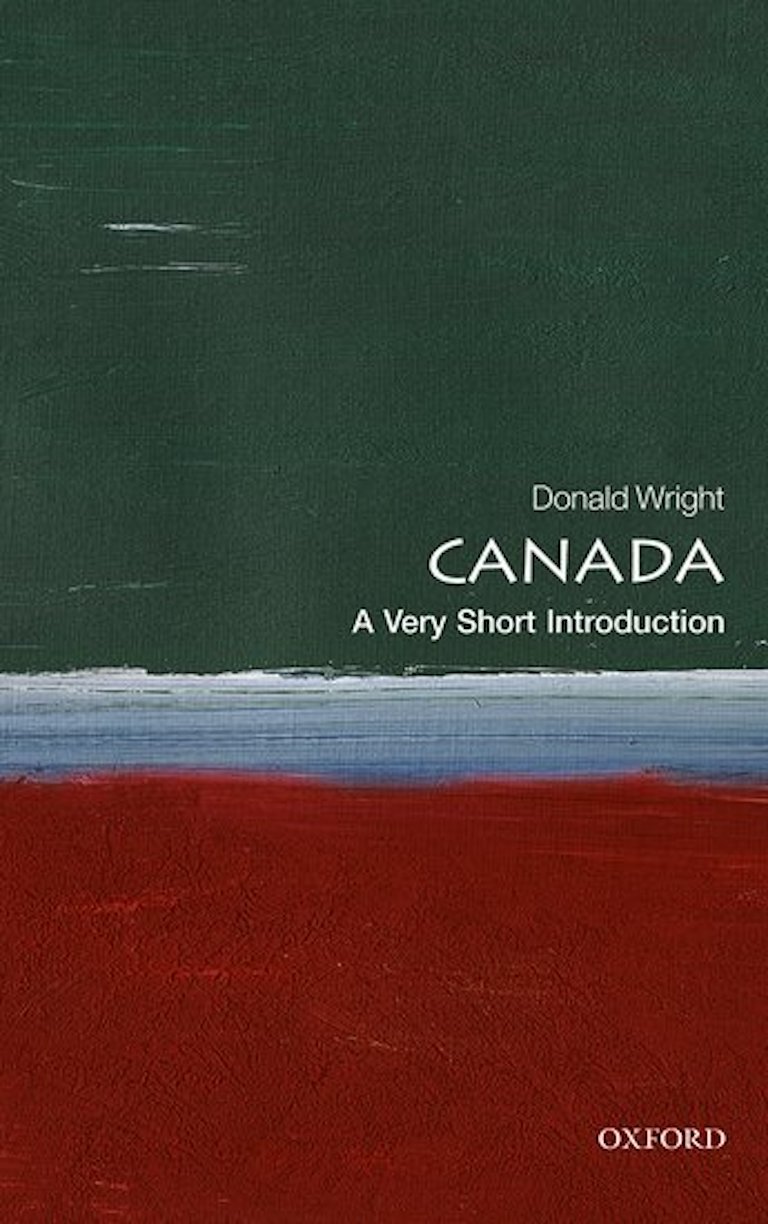Canada

Canada: A Very Short Introduction
by Donald Wright
Oxford University Press,
160 pages, $11.95
A fellow American asked me to recommend a one-volume book on Canadian geography, history, and culture. She had just taken my Welcome to Canada adult class and wanted to learn more, adding that she was “not looking for an academic tome but something more detailed than a tourist guidebook.”
I suggested Canada: A Very Short Introduction (2020). It is exactly what the title suggests, written by an accomplished scholar within the length and scope allowed by the publisher. Oxford University Press says volumes in its Very Short series (670 titles since 1995 and counting) “are for anyone wanting a stimulating and accessible way into a new subject.” Donald Wright has provided just that regarding Canada. His contribution is a lively but meticulous work for non-experts, a popular book that also asks provocative and probing questions about the past, present, and future of the country.
Wright, author of an award-winning biography of Donald Creighton and co-editor of Symbols of Canada, begins and ends with Canada’s multicultural future: a family of Syrian refugees who arrived in Fredericton in 2016. (His book is dedicated in part to the family’s five children.) Wright says they “knew only two things about their new country ... that it was very big and that it was very cold.” As the latest in a long line of new arrivals over the centuries, they “had asked the Canadian question: What is Canada?”
“You can’t belong to a country unless you know something about that country,” states Wright. Immigrants coming to Canada receive the official citizenship study guide; but, Wright says, the booklet “Discover Canada started from the assumption that there is a single Canada,” whereas his book “started from a different premise when it selected six words and quickly pluralized them: beginning became beginnings, nationalism became nationalisms, and so on.” The other chapters focus on dispossessions, rights, borders, and Norths.
“Geographically large, historically complicated, and made up of people from around the world,” says Wright, “Canada can’t be reduced to a common denominator because there isn’t one. And that’s a good thing.”
This book is not a chronologically linear history of Canada. Within each chapter, the author moves around his theme, providing appropriate historical background as well as contemporary political and cultural allusions. Discussing the North as a defining idea and a symbol for Canada, he references literature, art, sports, and even the comedic characters Bob and Doug McKenzie, along with the sobering topics of climate change, climate politics, and Arctic sovereignty.
The chapter on borders outlines Canada’s place in the world, especially its relationship with the United States. “The actual and psychological borders are neither formalities nor anachronisms,” says Wright. “They separate two very different countries. Bilingualism, multiculturalism, a woman’s right to choose, and universal health care are public policies, but they are also values that reflect Canada’s identity and its commitment to equality.”
The print version of the book has shortcomings. The three maps lack detail, and the eight photographs add little. Some will find the font size small and may prefer the ebook version. These drawbacks are inherent with a book that fits easily in a purse, coat pocket, or even a Christmas stocking. There is a useful section of further readings for each of the book’s six chapters.
Canada: A Very Short Introduction joins and complements three other splendid recently published books with diminutive titles: A Little History of Canada, by H.V. Nelles; A Short History of Canada, by Desmond Morton; and A Concise History of Canada, by Margaret Conrad, a former colleague of Wright’s at the University of New Brunswick. Taken together — with their diverse purposes, interpretations, and voices — they reflect Canada itself and may be the “one” book for which my student was searching.
Themes associated with this article
Advertisement




